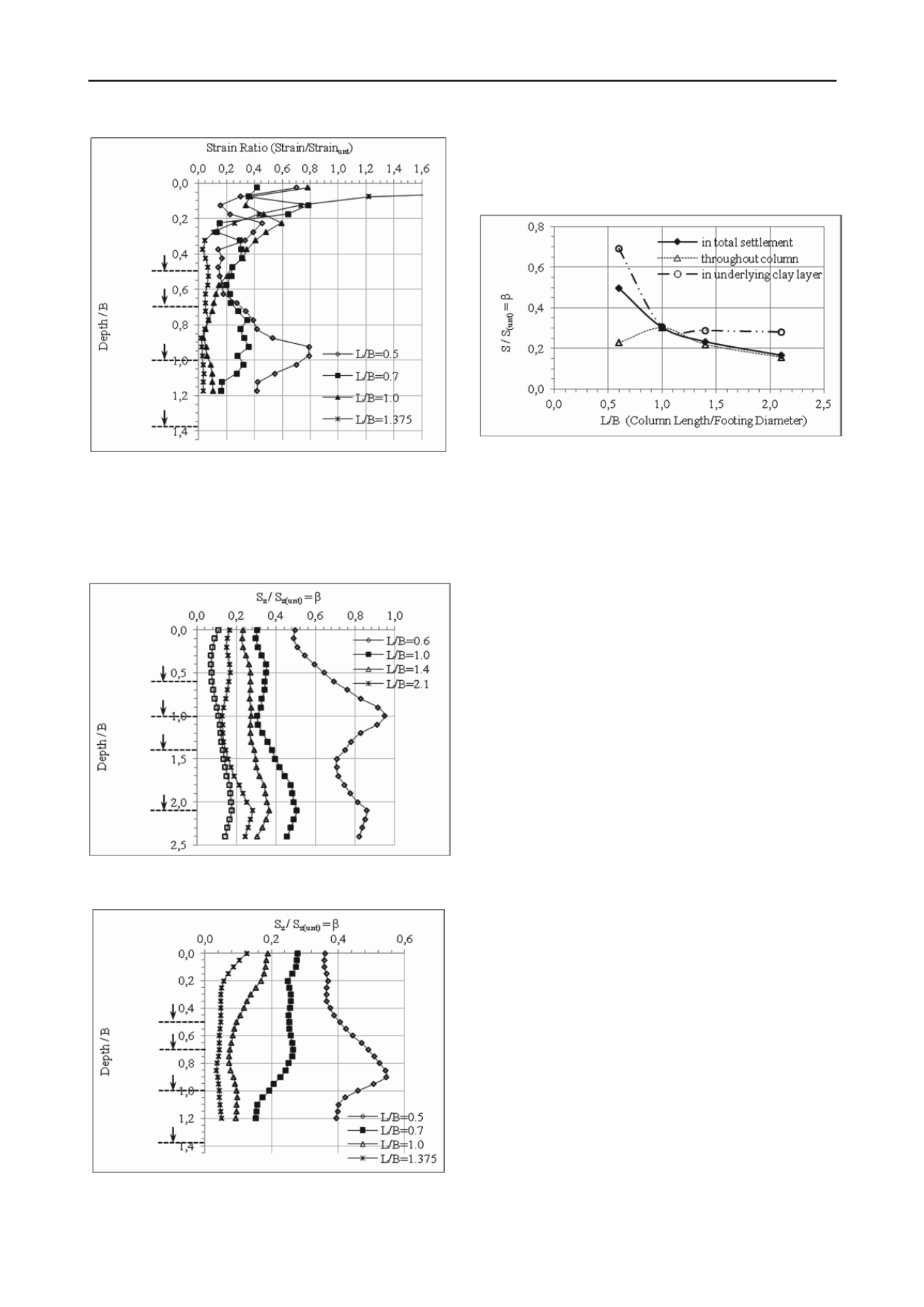
972
Proceedings of the 18
th
International Conference on Soil Mechanics and Geotechnical Engineering, Paris 2013
Figure 7. Strain ratio versus normalized depth graphs of Series IV and V
(B = 200 mm, 75 kPa)
Figure 8 and Figure 9 are the graphs of settlement reduction
factor β with depth, in other words the cumulative settlement
ratio of improved to untreated soil at any depth. Similar
behavior to variation of strain ratio above is observed.
Figure 8. Settlement reduction factor versus normalized depth graphs of
Series I and III (B = 100 mm, 75 kPa).
Figure 9. Settlement reduction factor versus normalized depth graphs of
Series IV and V (B = 200 mm, 75 kPa)
Settlement reduction factors along the columns are almost
the same as those measured in total settlements (cumulative
settlement) for L/B > 1.0 in all floating type granular columns
(Figure 10). Settlement reduction factors in the underlying clay
soil are also similar for lengths of L/B >1.0 but it is much
higher (0.7) for L/B=0.6 which means poor improvement.
end of column
L/B=0.5
L/B=0.7
L/B=1.0
L/B=1.375
Figure 10. Settlement reduction factor graphs of Series I and III
(B = 100 mm, 75 kPa)
4 CONCLUSIONS
Strains measured along granular columns and below in clay
under loaded circular plates indicate the following:
a) Strains are small below granular columns whose length
is roughly equal to side dimension of the plate
(L/B=1.0-1.2). This explains why floating columns are
effective in ground improvement.
b) Strains below short columns in clay with L/B<1.0 show
an increase and a peak indicating probable high stress
transfer through columns. Improvement by short
granular columns is limited.
L/B=
end of column
0.6
c) Longer columns with L/B>2.0 show similar behavior to
end bearing columns (i.e. very limited displacement)
L/B=1.0
Settlement reduction factors decrease with increasing
column lengths. These factors along the columns are similar to
the factors below the columns for lengths L/B>1.0.
L/B=1.4
L/B=2.1
5 REFERENCE
Tekin M 2005.
Model study on settlement behavior of granular columns
under compression loading
. Ph.D. thesis submitted to the graduate
school of natural and applied sciences of Middle East Technical
University Ankara TURKEY, 223 pages.
end of column
L/B=0.5
L/B=0.7
L/B=1.0
L/B=1.375


